Grow host plants to help the next generation of butterflies and moths survive and thrive.

WORTH THE WAIT
Gas plants may take a few years to get established, but the showy result is so rewarding.
1 Gas plant
DICTAMNUS ALBUS, ZONES 3 TO 8
This novelty plant is a stunner. From May to June, white, pink or lilac flowers top vertical stems that reach 3 feet tall. The plant is low maintenance but needs full sun and well-draining soil. Wear gloves when handling gas plants to avoid any adverse skin reactions.
Why we love it: On windless summer nights, light the flammable oil from the gas plant’s old flowers or seedpods to emit a brief vapor.
Host to: giant swallowtail
2 Little bluestem
SCHIZACHYRIUM SCOPARIUM, ZONES 3 TO 9
A blue-stemmed beauty, this tufted warm-season grass provides wonderful winter interest. It’s also a resilient host plant that grows best on dry upland sites such as hilltops or ridges, though it is very adaptable to nearly all soil conditions.
Why we love it: The USDA says little bluestem is one of the best grasses for nesting and roosting birds, such as finches, sparrows and juncos.
Host to: common wood nymphs and skippers
3 Prairie blazing star
LIATRIS PYCNOSTACHYA, ZONES 3 TO 9
In late summer and autumn, blazing star’s radiant rose purple flowers spike skyward, providing vivid color in your backyard. This hardy prairie favorite grows up to 4 feet tall, especially in damp environments.
Why we love it: It’s a low-maintenance, plant-it-and-leave-it bloom that reseeds readily, and it makes excellent fresh-cut flowers.
Host to: glorious flower moth
This story is from the {{IssueName}} edition of {{MagazineName}}.
Start your 7-day Magzter GOLD free trial to access thousands of curated premium stories, and 9,000+ magazines and newspapers.
Already a subscriber ? Sign In
This story is from the {{IssueName}} edition of {{MagazineName}}.
Start your 7-day Magzter GOLD free trial to access thousands of curated premium stories, and 9,000+ magazines and newspapers.
Already a subscriber? Sign In

Sense or Nonsense? - Why some birds can taste and smell - but others can't
Does a porcelain berry taste like a blueberry to a gray catbird? Does a block of lard smell like frying bacon to a northern flicker? The short answer is no. While some avian species do have a well-adapted sense of taste or smell, they can't distinguish between flavors and odors the way humans can. They're not picking up every ingredient in the suet you put out, says José Ramírez-Garofalo, an ornithology researcher at Rutgers University in New Jersey and the director of Freshkills Biological Station in Staten Island, New York.

Maple Mania - Amazing facts about this fall foliage mainstay
Amazing facts about this fall foliage mainstay
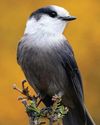
Food-Focused and Fierce - Meet Canada jays and learn why they eat almost anything they can find
Even if you haven't heard of Canada jays, you've heard of their relatives. Members of the corvid family, they belong to the same group as American crows, blackbilled magpies, and jays including blue, Steller's and scrub. "Unlike many of the other jays, a Canada jay doesn't have a crest of any kind; it just has a rounded head," says Dale Gentry, director of conservation for Audubon Upper Mississippi River.In 2018, the Canada jay's name was changed from gray jay, but Dale thinks the former adjective was fitting. "Most of its body is shades of gray with some white," he says. "There are different subspecies that have different physical traits, but most of them have some lighter coloring on their foreheads, upper breasts and throats, each with a darker streak that starts at each eye and goes back."
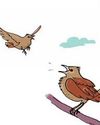
IN GOOD COMPANY
BIRDS OF A FEATHER MAY FLOCK TOGETHER, but what about other collectives of critters-and what do you call them when they do?
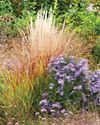
YOUR OWN Perfect Prairie
Learn how to cultivate an oasis of grassland flora in your backyard

ON THE MOVE
Birds approach the challenges of migration in surprising ways. Learn about how they walk, swim or take the scenic route during their travels.
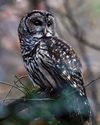
Autumn Wonders
Fall colors offer befitting backdrops for these stunning reader photos
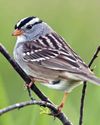
Sparrow Look-Alikes
Distinct sounds help separate these similar species
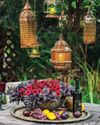
Embracing the Darkness
From black plants to moody decor, Gothic garden elements can offer a unique outlet to express your dark side
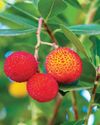
Red-Hot Plants
Scarlet-hued berries add a pop of color to any garden